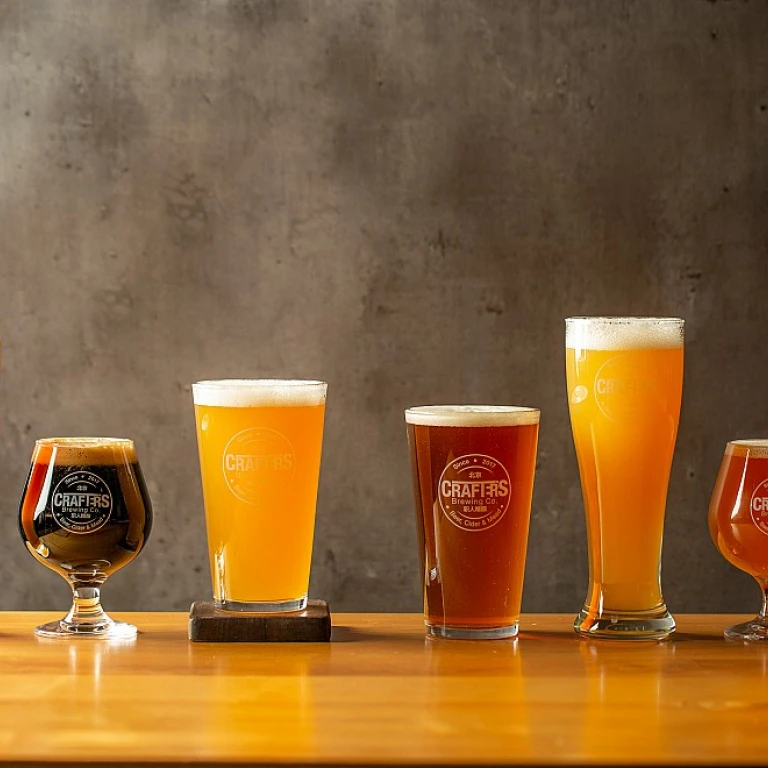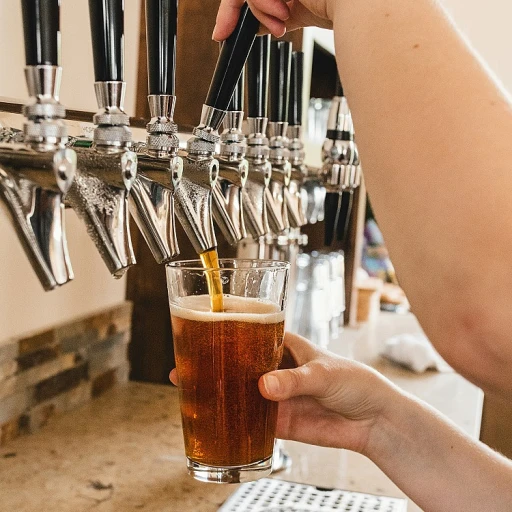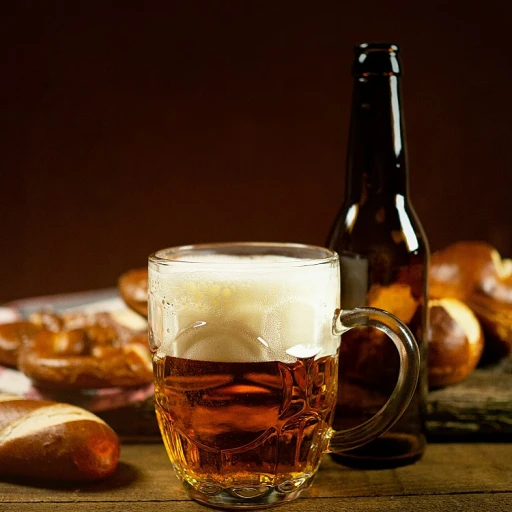The Brewer's Craft: A Journey Through History
Tracing the Brewer's Footprints Through Time
The brewer's craft is a tale as old as time, filled with evolution and rich traditions that mirror the progress of human civilization. Not just a maker of beverages, the brewer is a vital craftsman who transforms simple ingredients into an intricate symphony of flavors and aromas.
In ancient civilizations, brewers were regarded as community fixtures, revered for their wisdom in fermentation processes that required a delicate blend of art and science. Over centuries, this art form traveled across cultures and continents, evolving alongside people's tastes and preferences while still rooted in the fundamental principles of craft brewing.
The Renaissance of Brewing
The 20th and 21st centuries have heralded a renaissance of sorts for brewers, igniting a global interest in crafting unique beers with distinct profiles. This resurgence brought with it a deeper appreciation for the artistry involved, paving the way for a plethora of beer styles, from classic lagers to experimental brews incorporating exotic ingredients.
In this modern era, brewers not only focus on traditional brewing methods but also leverage cutting-edge technology to refine their products. This blend of tradition and innovation forms the backbone of today's vibrant beer culture.
The Brewer's Toolbox: Essentials for Modern Crafting
Among the essentials every brewer cherishes is their set of tools and equipment. As brewing continues to captivate enthusiasts worldwide, having access to the essential gear for beer enthusiasts is crucial for both beginners and seasoned brewers aiming for perfection and innovation in every batch.
Tasting and Reviews: What Makes a Beer Stand Out
Unveiling Flavor Profiles and Unique Characteristics
Tasting beer is an adventure of the senses where each sip tells part of a story crafted by the brewer. From the malt's sweetness to the bitterness of the hops, each component contributes its unique touch. When examining the different types of beer, several factors come into play:- Aroma: This is the first impression and can range from floral to fruity, spicy, or earthy. It gives clues about the ingredients used and the brewing process.
- Appearance: Includes color, head, and clarity. A beer's hue can vary from pale straw to deep black, influenced by the malts and toasting process.
- Flavor: A nuanced blend of malt, hops, yeast, and other ingredients like spices or fruit. Balance is key between sweet, salty, bitter, sour, and umami.
- Mouthfeel: Describes the physical sensations of beer in the mouth, influenced by carbonation and body. It ranges from light and crisp to thick and velvety.
Features That Set a Beer Apart
Thanks to the diverse creativity of brewers, the variety of beers available today allows for a broad spectrum of tasting experiences. Some features that make a beer stand out include:- Unique Ingredients: Craft brewers experiment with local ingredients and adjuncts like honey, spices, or exotic fruits, creating distinct flavors.
- Aging Process: Some beers are aged in barrels previously used for spirits, adding complexity and depth to the flavor profile.
- Innovative Techniques: Modern brewing techniques, such as dry hopping or using a specific strain of yeast, can enhance flavor intricacy.
Navigating Beer Purchases: Tips and Tricks
Choosing the Right Beer for Every Occasion
Navigating the myriad options available in the beer market can be a daunting task. With countless styles, flavors, and breweries to choose from, finding the perfect beer can feel overwhelming. Here are some tips to make your beer-shopping experience enjoyable and successful.
- Know Your Preferences: Begin by identifying your taste preferences. Do you lean towards hoppy IPAs, rich stouts, or crisp lagers? Understanding your own palate can significantly narrow down your choices.
- Read Labels: Don’t underestimate the information provided on beer labels. They often contain vital clues about the flavor profile, alcohol content, and overall style of the beer.
- Check out Local Breweries: Local breweries often offer unique, small-batch options that can be delightful surprises. Take advantage of tasting flights if available to get a sense of the brewery's offerings.
- Seek Guidance: Don’t hesitate to ask for recommendations from knowledgeable staff at your local bottle shop or bar. They can provide insights based on your preferences and guide you to new discoveries.
- Consider the Occasion: Think about the setting where you’ll be enjoying the beer. A light, refreshing option might be ideal for a sunny day, while a bold, complex beer may be better suited for a cozy evening indoors.
- Purchase Fresh: Beer is best enjoyed fresh, especially with hop-forward styles where the delicate aromas can dissipate over time. Check the packaging dates and aim to buy the freshest stock.
- Prepare with Accessories: To enhance your beer experience further, consider investing in beer bottle koozies to keep your drink colder longer.
Beer Accessories: Enhance Your Experience
Elevating Your Beer Enjoyment
For anyone passionate about beer, enhancing the experience goes beyond just selecting the right brew. The right accessories can elevate your beer tasting adventures to new heights.- Glassware Matters: The significance of using the correct glassware cannot be overstated. Each glass type is designed to highlight specific beer attributes, such as aroma and flavor clarity. From pilsner glasses to tulip-shaped glasses, investing in a quality set can enhance your tasting sessions.
- The Perfect Pour: A bottle opener or beer tap can be more than just a functional item; they can be stylish statements that reflect your brewing passion. Consider a unique opener that brings a little flair to your bar counter.
- Temperature Control: Keeping your beer at the right temperature is crucial. Insulated growlers, beer coolers, or even a home draft system can ensure your beer's integrity from tap to last sip.
- Sampling with Friends: To truly appreciate your beer variety, tools like tasting paddles or sample glasses can create a communal environment great for sharing and comparing notes with fellow enthusiasts.
The Business of Brewing: Insights and Opportunities
The Thriving World of Craft Breweries
The craft beer movement has revolutionized the beer industry, providing a fresh perspective and a broader selection for both brewers and consumers. The growth of craft breweries has not only contributed to the diversification of beer styles but has also had a significant economic impact.- Increased Variety: Craft breweries are known for their innovation, offering a wide range of styles and flavors that appeal to different palates. This variety enhances consumer choices and encourages exploration and experimentation within the community.
- Economic Contributions: Beyond just beer production, craft breweries contribute to local economies by creating jobs, attracting tourists, and fostering community engagement through brewery tours and events.
- Market Competition: While the rise of craft breweries has intensified market competition, it has also driven established brewers to improve their products and align more closely with consumer preferences for quality and uniqueness.
Understanding the Role of a Brewmaster
The role of a brewmaster can significantly influence the success of a brewing business. Brewmasters play a crucial role in ensuring consistency, quality, and innovation in beer production.- Expertise and Experience: Brewmasters bring their unique skills and creativity to the table, contributing to the brewery's signature style and differentiating it from competitors.
- Quality Assurance: Maintaining consistent quality across batches is vital, and a skilled brewmaster is essential to managing and optimizing the brewing process.
- Continuous Innovation: Constantly experimenting with new ingredients and brewing techniques allows brewmasters to create distinctive beers that captivate consumers and keep the brewery's offerings fresh and exciting.
Investment Opportunities in the Brewing Industry
As the beer industry evolves, it presents opportunities for investment in various areas, from supporting startups to expanding production capacities.- Support for Startups: Emerging breweries often seek investment to finance their growth, whether it's by expanding distribution networks or enhancing production facilities. Such support can offer investors an entry point into a thriving industry.
- Infrastructure Development: As demand for craft beers increases, breweries may invest in new equipment or strategies to boost efficiency and meet market demands.
- Sustainability Initiatives: With a growing focus on environmental responsibility, investing in sustainable brewing practices can not only attract eco-conscious consumers but also offer long-term cost savings and benefits.





